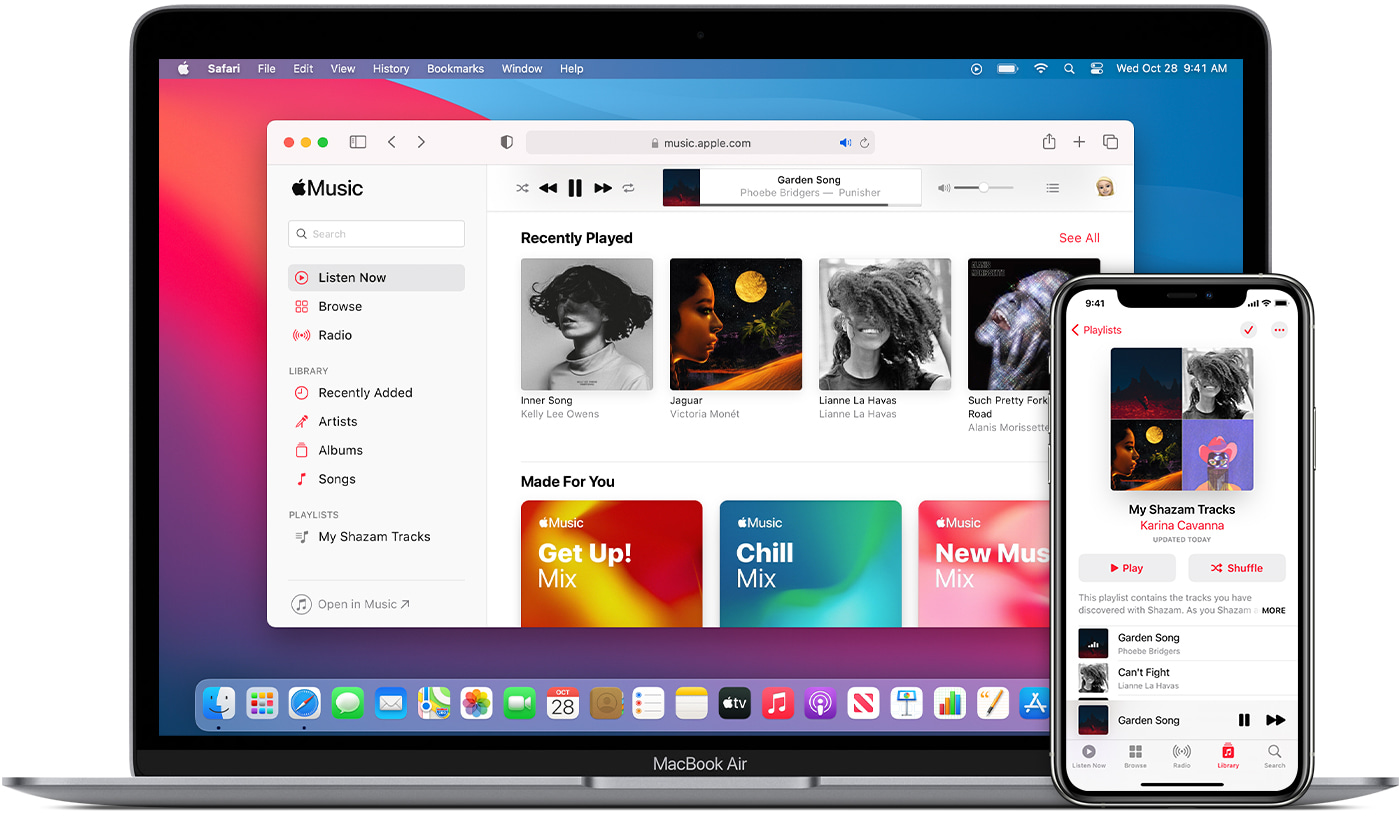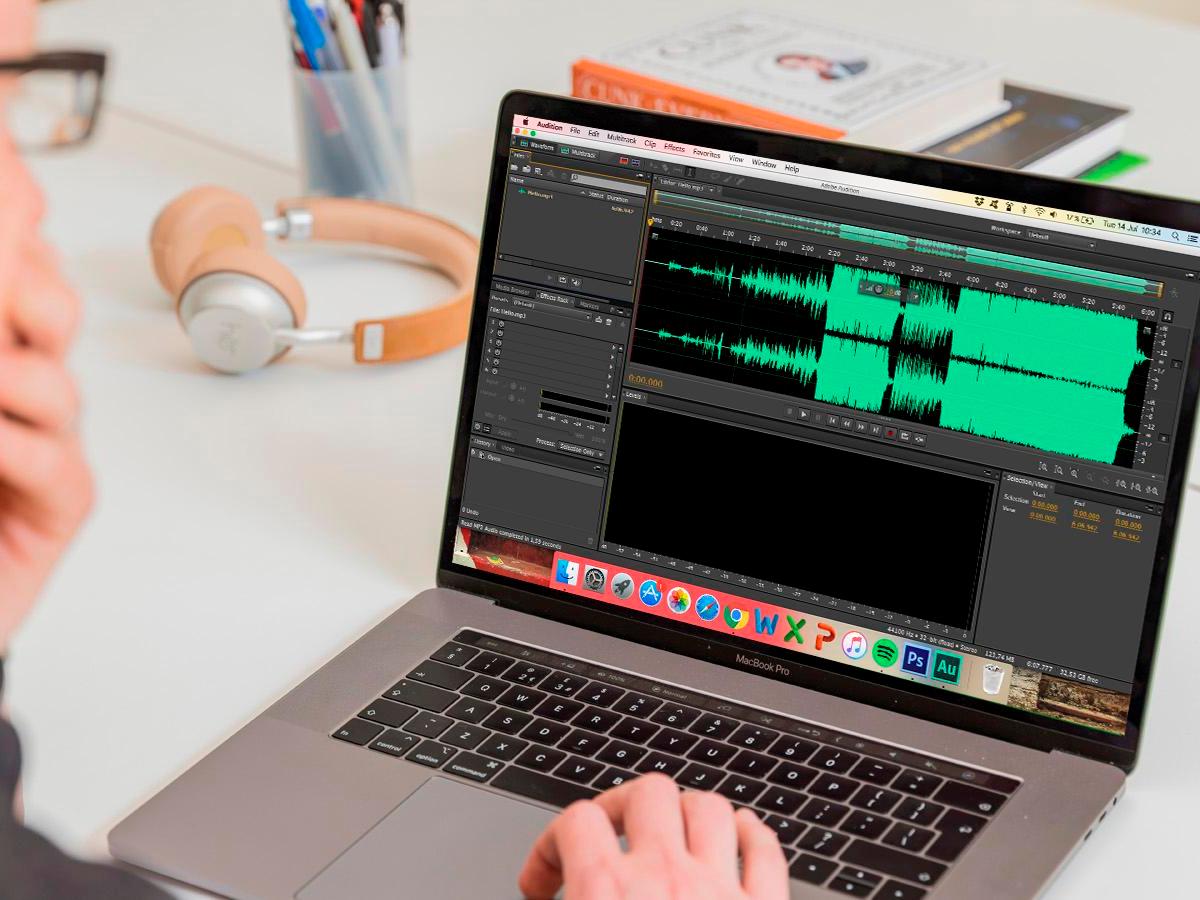Home>Production & Technology>Audiobook>How To Convert MP3 Into Audiobook


Audiobook
How To Convert MP3 Into Audiobook
Modified: January 22, 2024
Learn how to convert MP3 files into high-quality audiobooks with our step-by-step guide. Unleash the power of audiobooks today!
(Many of the links in this article redirect to a specific reviewed product. Your purchase of these products through affiliate links helps to generate commission for AudioLover.com, at no extra cost. Learn more)
Table of Contents
Introduction
Welcome to the world of audiobooks, where you can immerse yourself in captivating stories and insightful knowledge through the power of audio. Audiobooks have become increasingly popular in recent years, offering a convenient and enjoyable way to experience literature and learning. But what if you have a collection of MP3 files and want to convert them into audiobooks? In this article, we will guide you through the process of converting MP3 files into audiobooks, allowing you to listen to your favorite content in a seamless and immersive format.
Converting MP3 files to audiobooks opens up a world of possibilities. Not only can you transform your favorite novels, self-help books, and educational materials into engaging audio formats, but you can also repurpose your own recorded content, such as interviews or lectures, into professional-sounding audiobooks.
While the process may seem daunting at first, don’t worry! We will break it down into simple steps, making the conversion process accessible to both beginners and tech-savvy individuals. By following these steps, you’ll be able to convert your MP3 files into audiobooks in no time.
Before we dive into the conversion process, it’s important to note that the quality of the end result depends on various factors, such as the audio software you choose, the accuracy of the MP3 to text conversion, and the editing and enhancing techniques employed. By utilizing the right tools and techniques, you can create professional-grade audiobooks that rival commercially produced ones.
So, whether you’re an avid reader looking to enjoy books on the go or a content creator seeking a new way to share your work, let’s embark on this journey of converting MP3 files into audiobooks. Get ready to listen, learn, and experience the joy of storytelling in a whole new way!
Step 1: Choosing the Right Software
The first step in converting your MP3 files into audiobooks is selecting the right software for the job. There are several options available, each with its unique features and capabilities. Here are a few popular choices:
- Adobe Audition: Known for its advanced audio editing capabilities, Adobe Audition is a professional-grade software widely used by audiobook producers and voice actors. It offers a range of tools for cleaning up audio, adding effects, and editing tracks to create high-quality audiobooks.
- Audacity: Audacity is a free, open-source audio editing software that provides a wealth of features for both beginners and experienced users. It allows you to edit MP3 files, convert them into different formats, and apply effects to enhance the audio quality.
- FFmpeg: FFmpeg is a powerful command-line tool for manipulating multimedia files. While it may have a steeper learning curve compared to other software, it offers robust encoding, decoding, and transcoding capabilities, making it suitable for more advanced users.
When choosing the right software, consider factors such as your level of expertise, budget, and specific requirements. Some software options offer more comprehensive features but come with a price tag, while others are free but may have limitations in terms of functionality.
Additionally, it’s essential to ensure that the software is compatible with your operating system, as some programs are designed specifically for Windows, macOS, or Linux. Check the system requirements and reviews of the software to make an informed decision.
Remember to download and install the selected software from reputable sources to protect your computer from potential malware or security threats. Once you have the right software installed, you’re ready to move on to the next step: converting MP3 to text.
Step 2: Converting MP3 to Text
After choosing the appropriate software, the next step is to convert your MP3 files into text. This process involves using speech-to-text transcription software or services to convert the spoken words in the audio files into written text. Here are a few methods you can use:
- Automatic Speech Recognition (ASR) Software: There are various ASR software options available that utilize advanced algorithms to convert speech into text. Examples include Google Cloud Speech-to-Text, IBM Watson Speech to Text, and Microsoft Azure Speech to Text. These services use machine learning and artificial intelligence to transcribe audio with a high level of accuracy.
- Online Transcription Services: If you prefer a more hands-off approach, you can use online transcription services like Rev, TranscribeMe, or GoTranscript. These services employ professional transcribers who manually transcribe your audio files, ensuring accurate and reliable results. While this option may require a fee, it can save you time and effort.
- Manual Transcription: If you have the time and patience, you can transcribe the audio files manually. This involves playing the MP3 file and typing out the spoken words. While this method may be time-consuming, it gives you full control over the transcription process.
When choosing a method to convert MP3 to text, consider factors such as the accuracy of the transcription, the amount of time you have available, and your budget. Automatic speech recognition software tends to provide faster results but may have minor inaccuracies, while manual transcription offers greater precision but requires more time and effort.
Once you have the text representation of your MP3 files, it’s time to move on to the next step: formatting the text for the audiobook.
Step 3: Formatting the Text
Now that you have successfully converted the MP3 files into text, it’s time to format the text to prepare it for the audiobook. Proper formatting plays a crucial role in ensuring a smooth and enjoyable listening experience. Here are some key considerations:
- Paragraphs and Sentence Structure: Break the text into paragraphs for better readability. Keep sentences concise and cohesive to maintain the flow of the story or information.
- Dialogue and Speaker Tags: Differentiate dialogue by using quotation marks or indentation. Use speaker tags to indicate who is speaking, such as “John said” or “Narrator:”. This helps listeners understand the conversation and follow the story easily.
- Punctuation and Formatting: Ensure proper punctuation like commas, periods, and exclamation marks to convey the intended meaning effectively. Format headings, subheadings, and chapter titles to make them stand out and provide structure to the audiobook.
- Text Cleanup: Review the text for any errors or inconsistencies that may have occurred during the conversion process. Check for spelling mistakes, missing words, or transcribed text that doesn’t match the audio. Correcting these errors will enhance the overall quality of the audiobook.
- Text Annotation: Consider annotating the text with notes or instructions for the narrator. This can include emphasis on specific words or phrases, pronunciation guidelines for complex terms, or cues for sound effects or music. These annotations help the narrator accurately bring the text to life.
Formatting the text might be time-consuming, but it is an important step in creating a well-structured and engaging audiobook. Paying attention to these details will ensure that the final product is cohesive, easy to follow, and enjoyable for listeners.
Once you have formatted the text, you are ready for the next step: converting the text into an audiobook format. Get ready to transform the written words into an immersive audio experience!
Step 4: Converting Text to Audiobook
Now that you have properly formatted the text, it’s time to convert it into an audiobook format. This step involves recording the narration of the text and creating audio files that can be played back as an audiobook. Here’s how you can go about it:
- Select a Narrator: Decide whether you want to narrate the audiobook yourself or hire a professional narrator. If you choose to narrate it yourself, ensure that you have a clear and captivating voice that will engage listeners. Alternatively, you can hire a voice actor who specializes in audiobook narration to bring your text to life.
- Set Up a Recording Space: Create a quiet and acoustically treated space for recording. Use a good quality microphone and headphones to capture clear and high-fidelity audio. Eliminate any background noise or disturbances that may affect the recording quality.
- Record the Audio: Begin recording the narration of the text, following the formatted text as a reference. Maintain a consistent tone and pace throughout the narration. Take breaks whenever necessary to ensure the quality and clarity of the audio.
- Edit the Audio: After recording, edit the audio files to remove any mistakes, pauses, or unwanted noises. Use audio editing software to enhance the audio quality, adjust volume levels, and add any necessary effects to improve the overall listening experience.
- Add Music and Sound Effects (Optional): If desired, you can enhance the audiobook by incorporating background music and sound effects. Be mindful of copyright restrictions when selecting music or seek royalty-free music libraries. Sound effects can help create a more immersive experience for the listeners.
Converting text into an audiobook requires careful narration and editing to ensure a seamless and enjoyable listening experience. Whether you choose to narrate it yourself or hire a professional, the aim is to bring the written text to life and evoke emotions in listeners.
Once the narration and editing process is complete, it’s time to move on to the final step: exporting and saving the audiobook files.
Step 5: Editing and Enhancing the Audiobook
After converting the text into an audiobook format, the next step is to edit and enhance the audio files to ensure a polished and professional final product. Editing and enhancing the audiobook involves refining the audio quality, improving the pacing, and adding finishing touches to create an immersive listening experience. Here are some key steps to consider:
- Audio Quality Enhancement: Use audio editing software to clean up any background noise, pops, clicks, or other unwanted artifacts. Apply equalization to balance the overall sound and enhance clarity. Utilize noise reduction tools to minimize any distractions that may affect the listener’s experience.
- Smoothing Out Narration: Listen to the narrated audio file and identify any inconsistencies, awkward pauses, or mispronunciations. Smooth out the narration by removing mistakes, adjusting pacing, and ensuring a consistent tone and voice quality throughout the audiobook.
- Chapter Markers and Transitions: If your audiobook is divided into chapters, add markers or transitions to clearly indicate the start of a new chapter. This helps listeners navigate through the audiobook easily and provides a sense of structure to the content.
- Review and QC: Take the time to listen to the edited audiobook in its entirety to ensure the seamless flow of narration, impeccable audio quality, and accurate representation of the text. Make any necessary adjustments or refinements before proceeding to the final step.
- Consider Professional Help: If you lack the expertise or time to edit and enhance the audiobook yourself, you can consider hiring a professional audio engineer or editor who specializes in audiobook production. They can help refine the audio, ensure consistency, and provide a polished finish to the final product.
Editing and enhancing the audiobook is an important step as it significantly influences the quality and overall listening experience. Paying attention to the details and investing time in refining the audio will result in a professional-sounding audiobook that captivates and engages listeners.
Once the editing and enhancement process is complete, it’s time to move on to the final step: exporting and saving the audiobook files.
Step 6: Exporting and Saving the Audiobook
After editing and enhancing the audiobook, the final step is to export and save the files in a suitable format for distribution and playback. Here’s how you can accomplish this:
- Select the Output Format: Choose an audio format that is widely supported and compatible with various devices and platforms. Common formats for audiobooks include MP3, AAC, and M4B (commonly used for audiobooks on Apple devices).
- Set the Quality Parameters: Determine the desired audio quality and file size for your audiobook. Strive for a balance between audio quality and file size to ensure optimal playback experience and efficient distribution.
- Export Individual Chapters: If your audiobook is divided into chapters, export each chapter as a separate audio file. This allows listeners to easily navigate through the audiobook and access specific sections.
- Add Metadata: Include pertinent information such as the title, author, narrator, and book cover image in the metadata of the audiobook files. This metadata provides essential details and improves the presentation and organization of the audiobook.
- Create a Master File: In addition to exporting individual chapters, consider creating a master file that combines all the chapters into a single file. This provides an alternative option for listeners who prefer to listen to the entire audiobook without interruption.
- Save and Backup: Save the exported audiobook files in a secure location and consider creating backups to prevent any data loss. This ensures that you have a copy of your audiobook readily available for distribution or future modifications.
Once you have exported and saved your audiobook files, perform a final quality check by listening to them to ensure that they are in the desired format and maintain the intended audio quality. Congratulations! Your audiobook is now ready to be shared with the world.
Remember to consider the appropriate distribution channels and platforms for sharing your audiobook. This could include online audiobook marketplaces, your website or blog, or even collaborating with audiobook distributors or platforms.
Enjoy the satisfaction of having converted your MP3 files into a professionally produced audiobook that can be enjoyed by listeners worldwide.
Conclusion
Congratulations on successfully converting your MP3 files into audiobooks! By following the steps outlined in this guide, you have embarked on a journey to transform written text into an immersive audio experience. Whether you converted your favorite novels, self-help books, or personal recordings, you have now opened up a world of possibilities for yourself and your audience.
Converting MP3 files into audiobooks requires careful consideration, from choosing the right software to formatting the text, and from recording the narration to editing and enhancing the audio. Attention to detail at each stage of the process ensures you create a professional-grade audiobook that both captures the essence of the text and engages listeners.
Remember, audiobooks provide a convenient and enjoyable way to consume literature, learn new concepts, and share your own content. They allow for multitasking, enabling people to listen while commuting, exercising, or simply relaxing. With the growing popularity of audiobooks, converting your MP3 files into this format gives you access to a broader audience and a unique way to make an impact.
Now that you have completed the journey, it’s time to consider the next steps—distribution and promotion. Explore audiobook platforms, work with distributors, or even consider self-publishing to make your audiobooks available to a wider audience. Leverage social media, blogs, and relevant communities to share your audiobooks and engage with your listeners.
Remember, the success of your audiobook goes beyond conversion and distribution. Engage with your listeners, gather feedback, and continuously improve your craft. With dedication, creativity, and a passion for storytelling, your audiobooks have the potential to captivate and inspire audiences around the world.
Enjoy the thrill of creating and sharing audiobooks, and may your journey into the world of sound and storytelling be a rewarding one. Happy listening!











